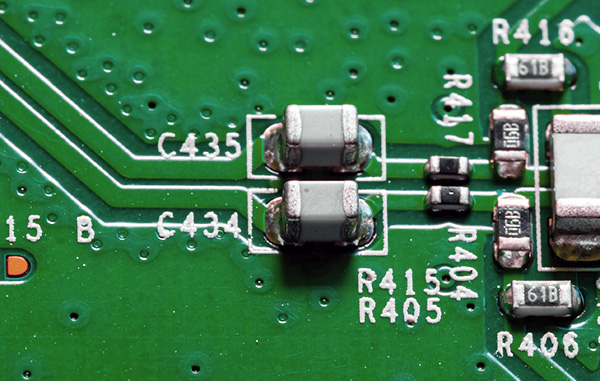EMC Question of the Week: March 14, 2022

Two 0.1-μF capacitors are placed in series with a high-speed differential trace pair on a circuit board to block low-frequency noise. Which of the following would generally be the best choice for these capacitors?
- C0G ceramic
- X7R ceramic
- Z5U ceramic
- tantalum
Answer
The best answer is “a.” The C0G ceramic capacitors are Class 1 ceramics with a capacitance that is relatively independent of temperature and applied voltage. X7R and Z5U ceramic capacitors are both Class 2 ceramics. Their capacitance is a relatively strong function of the applied voltage. The non-linear behavior of Class 2 ceramics can introduce unexpected signal distortion and imbalance.
Keeping high-speed differential traces balanced is generally a high priority. Class 1 ceramics with a low tolerance and small package size generally exhibit the same impedance over a wide range of frequencies.
Class 2 ceramics are best suited for applications where there is a significant DC bias relative to the signal and/or where the precise value of the capacitance is not critical. High-frequency printed circuit board decoupling is a prime example of an application well-suited to Class 2 ceramics.
Tantalum capacitors are polarized capacitors and have a high ESR compared to ceramic capacitors. They also generally have a higher tolerance. Like other electrolytic capacitors, they are well-suited to low-frequency applications with a DC-bias such as low-frequency printed circuit board decoupling.
Have a comment or question regarding this solution? We'd like to hear from you. Email us at
